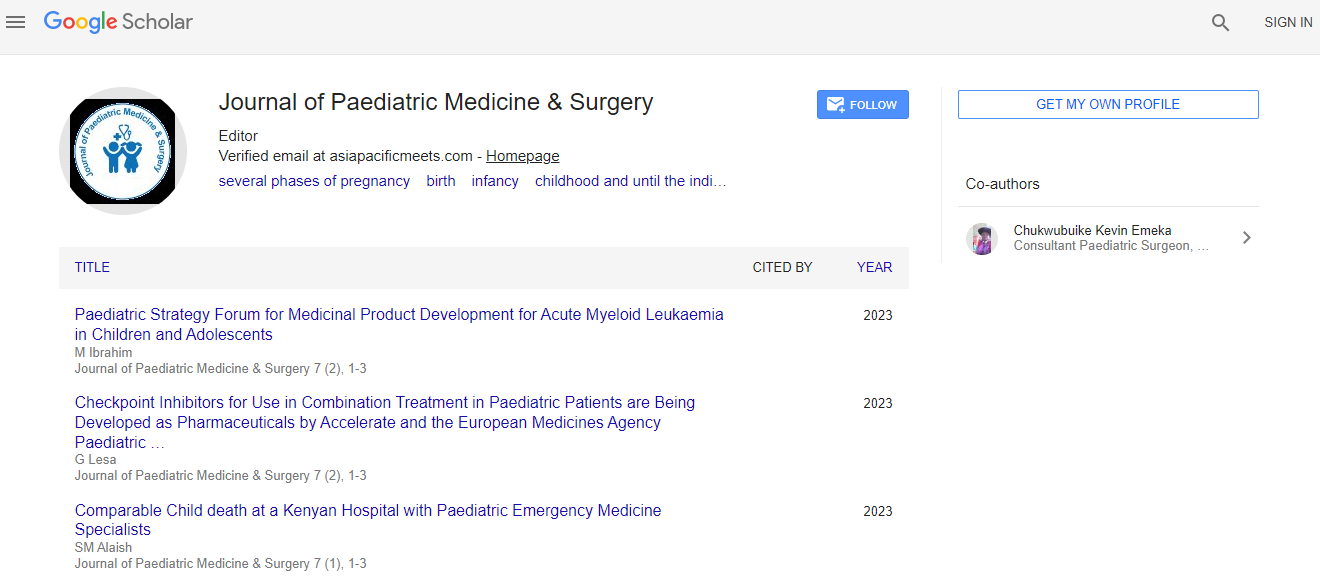Rectal Prolapse in Children: How Effective is Non-Operative Treatment?
*Corresponding Author: Chukwubuike Kevin Emeka, Department of Surgery, Enugu State University Teaching Hospital, Enugu, Nigeria, Email: chukwubuikeonline@yahoo.comReceived Date: Jun 05, 2022 / Accepted Date: Jun 29, 2022 / Published Date: Jun 30, 2022
Citation: Emeka CK, Patrick AL, Chikaodili ET (2022) Rectal Prolapse in Children: How Effective is Non-Operative Treatment? J Paediatr Med Sur 6: 181.DOI: 10.4172/jpms.1000181
Copyright: © 2022 Emeka CK, et al. This is an open-access article distributed under the terms of the Creative Commons Attribution License, which permits unrestricted use, distribution, and reproduction in any medium, provided the original author and source are credited.
Abstract
Background: Children with rectal prolapse present frequently to the pediatric surgeon through the outpatient clinic and children emergency units. The predisposing factors leading to rectal prolapse could be congenital or acquired. The aim of this study was to evaluate our experience with regards to the management of rectal prolapse in children.
Materials and Methods: This was a retrospective study of children aged 15 years and younger who were managed for rectal prolapse in a teaching hospital in Enugu, Nigeria. This study covered a 5-year period. Only children with clinically obvious rectal prolapse as at the time of presentation were recruited into the study. Diagnosis of rectal prolapse was clinical.
Results: A total of 112 cases of rectal prolapse were seen during the study period. There were 82 (73.2%) males, 30 (26.8%) females and the median age of the patients was 16 months with a range of 5 months to 5 years. Forty-three (38.4%) patients had a preceding history of constipation while 28 (25%) patients had diarrheal diseases before the rectal prolapse occurred. All the patients were managed non-operatively. Almost all the patients recovered following non-operative treatment of the rectal prolapse except for those that were lost to follow up.
Conclusion: Rectal prolapse in children is not an uncommon clinical entity. Non-operative (conservative) treatment may take a long time but it is an effective modality of treatment of pediatric rectal prolapse.

 Spanish
Spanish  Chinese
Chinese  Russian
Russian  German
German  French
French  Japanese
Japanese  Portuguese
Portuguese  Hindi
Hindi 